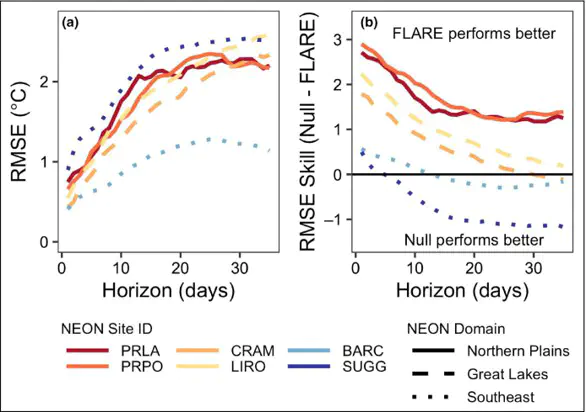Near-term forecasts of NEON lakes reveal gradients of environmental predictability across the U.S.
 (a) Surface water temperature forecast accuracy; (b) skill score of the null day-of-year model vs. FLARE
(a) Surface water temperature forecast accuracy; (b) skill score of the null day-of-year model vs. FLARE
Abstract
The US National Ecological Observatory Network’s (NEON’s) standardized monitoring program provides an unprecedented opportunity for comparing the predictability of ecosystems. To harness the power of NEON data for examining environmental predictability, we scaled a near-term, iterative, water temperature forecasting system to all six NEON lakes in the conterminous US. We generated 1-day-ahead to 35-days-ahead forecasts using a process-based hydrodynamic model that was updated with observations as they became available. Among lakes, forecasts were more accurate than a null model up to 35-days-ahead, with an aggregated 1-day-ahead root-mean square error (RMSE) of 0.61°C and a 35-days-ahead RMSE of 2.17°C. Water temperature forecast accuracy was positively associated with lake depth and water clarity, and negatively associated with fetch and catchment size. The results of our analysis suggest that lake characteristics interact with weather to control the predictability of thermal structure. Our work provides some of the first probabilistic forecasts of NEON sites and a framework for examining continental-scale predictability.